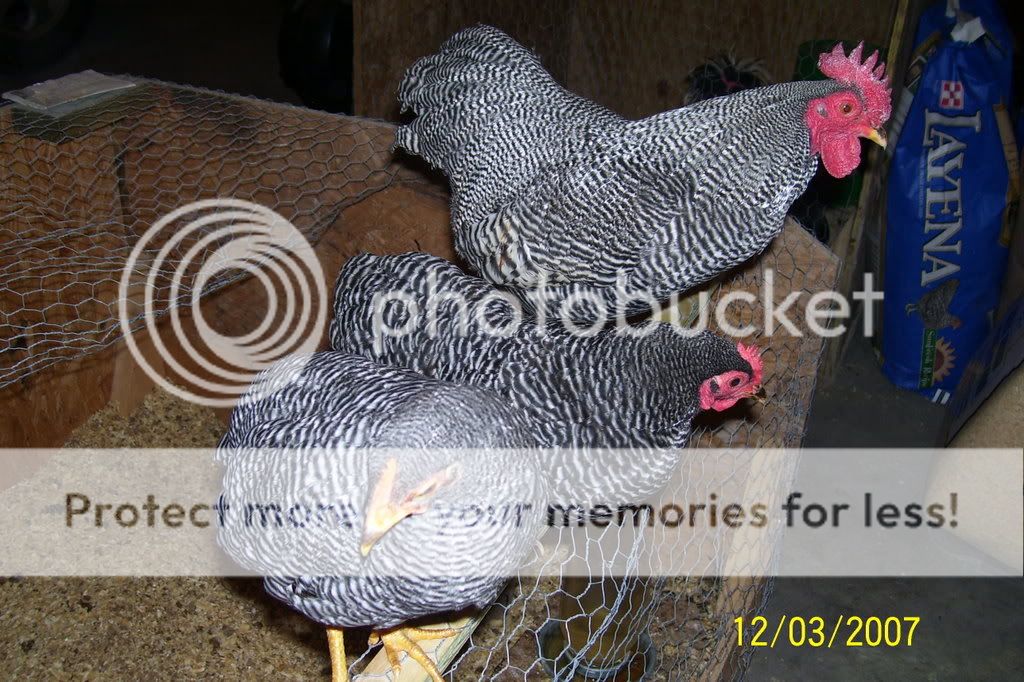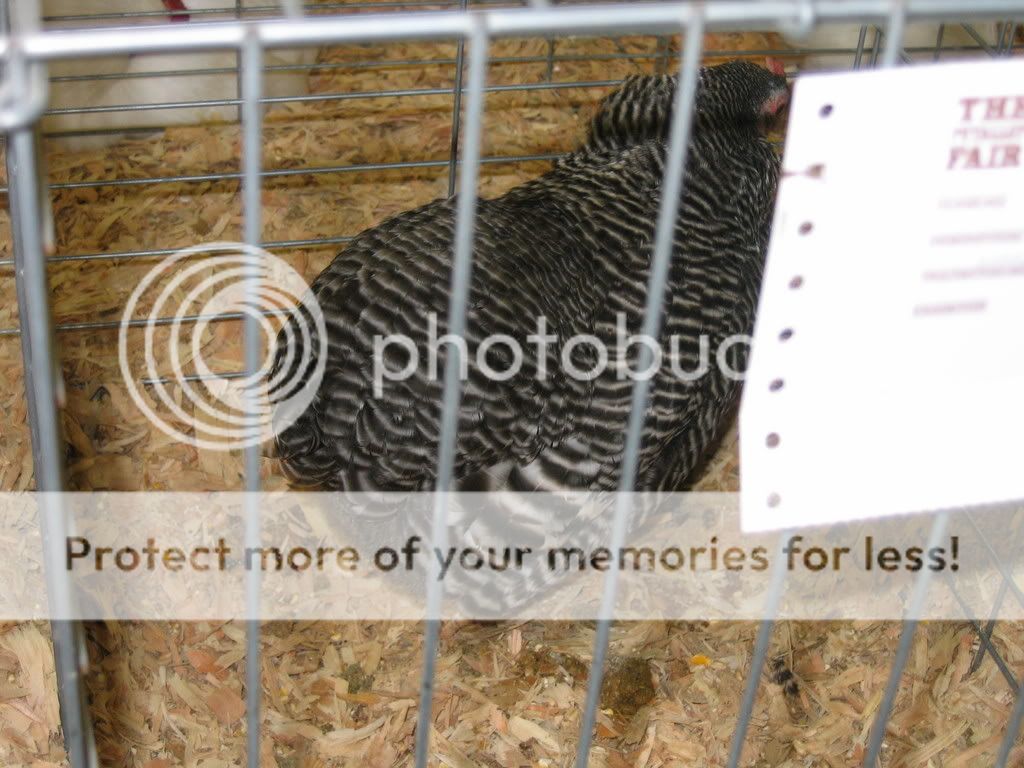You mention # of points on the comb...Let me grab my chicken bible real quick....The American Standard of Perfection states that " Single Comb: A moderately thin, fleshy formation of smooth soft surface texture, firm attached from the beak along the top of skull with a strong base, the top portion showing five or six rather deep serrations or distinct points, the middle points being higher than the anterior or posterior, forming a semi-oval when viewed in profile. The comb always erect and much larger and thicker in male than female; may be lopped or erect in female, depending on breed. The comb is divided into three sections, the front or anterior, the middle, and that extending past the rear base of the skull, the posterior or blade(p.6)"
The description of a single comb in general
The specific description for that of a Male Plymouth Rock:
"Comb: Single, medium in size, set firmly on the head; thick at base, straight and upright, with five well defined and serrated points, those in front and rear shorter than those in the middle. Blade not conforming too closely to shape of head. (p.41)"
The female is essentially the same w/ the exception being "(see pg. 33 females in production(p.42)". Which, if you do not have a standard handy, pm me and I can always give you that definition as well!
I love my standard!
BTW...I'm using the 2001 hardcover, color edition for page references.
-Sarah
PS. I'm sure you already know this since you're breeding quality, but a standard will answer nearly any question you have on specific breed information. After all, at a show, that's what your bird is being compared to!







